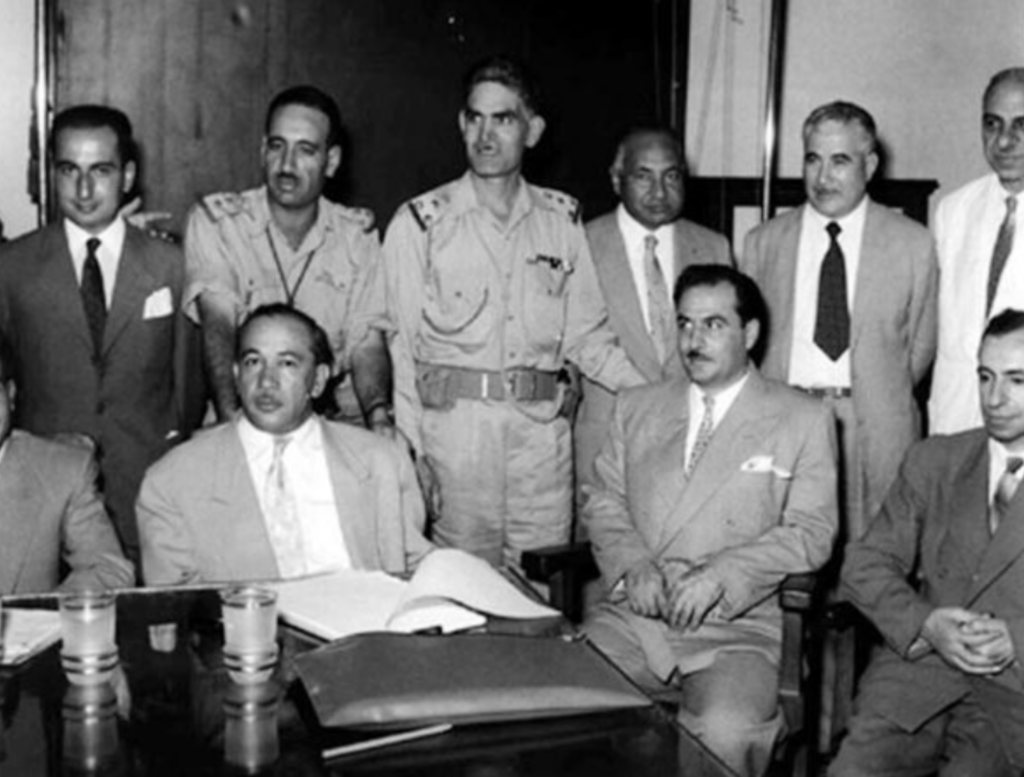14 July Revolution Iraq (1958)

By: Rania Basria / Arab America Contributing Writer
The 14 July Revolution, which happened in Iraq in 1958, is regarded as a watershed point in Arab history. This event not only signified the collapse of the Hashemite monarchy, but also laid the groundwork for Iraq’s future political environment. Arab America contribriting writer, Rania Basria, speaks about the revolution and how it was fueled by a complex combination of political, social, and economic causes, and how the aftermath changed Iraq’s national identity and standing in the Arab world
Iraq in the mid-20th century was a country dealing with both internal and external challenges. The Hashemite monarchy, formed in 1921 by King Faisal I with British help, struggled to maintain legitimacy amid Iraq’s varied and frequently turbulent populace. The country was divided along ethnic, religious, and tribal lines, with main groupings including Sunni Arabs, Shia Arabs, Kurds, and different minority populations. Furthermore, the monarchy’s tight relationship with Britain fueled hostility, particularly among nationalists and communists who saw it as a puppet dictatorship.
Economic conditions exacerbated resentment. Despite Iraq’s tremendous oil riches, much of the people remained underprivileged, and the advantages of natural resource extraction were unevenly distributed. The distribution of wealth and land was wildly uneven, heightening tensions between the governing class and the common public.
By the 1950s, resistance to the monarchy had formed a variety of political organizations, including the Iraqi Communist Party, the Ba’ath Party, and other nationalist groupings. These organizations found common ground in their quest to eliminate British control and create a more fair society.
The creation of the Baghdad Pact in 1955, a pro-Western defensive coalition that comprised Iraq, Iran, Pakistan, Turkey, and the United Kingdom, sparked the revolution. Many Iraqis saw the accord as another example of Western manipulation, fueling nationalist sentiments.
Dissatisfaction was also growing among military personnel. Young officers, encouraged by Egyptian President Gamal Abdel Nasser’s pan-Arab nationalist beliefs, attempted to topple the monarchy. These officers formed a clandestine group known as the Free Officers and began organizing a coup.
On July 14, 1958, the revolution started. The Iraqi army’s divisions, led by Brigadier General Abd al-Karim Qasim and Colonel Abdul Salam Arif, rushed quickly to take important Baghdad areas. The royal palace was attacked, and King Faisal II, along with other royal family members, were slain. The coup was carried out with astonishing effectiveness, and within a day, the monarchy was virtually demolished.
Qasim and Arif declared the Republic of Iraq. Qasim became Prime Minister, while Arif was appointed Deputy Prime Minister. The new administration pledged to promote measures of social fairness, national independence, and Arab unity.
The toppling of the Hashemite monarchy was received with a mixed response. Domestically, many Iraqis hailed the fall of a leadership they saw as corrupt and beholden to foreign interests. However, the revolution sparked a wave of bloodshed and retaliation. Purges targeted royalists, alleged collaborators, and perceived adversaries of the new authority.
Internationally, the revolution sent shockwaves throughout the region. Neighboring monarchies, notably Jordan and Saudi Arabia, were alarmed by the events in Iraq, worrying that revolutionary fervor might spread. The United States and the United Kingdom, both involved in the stability of their regional allies, were alarmed by the advent of a possibly pro-Soviet administration in Baghdad.
Under Qasim’s leadership, Iraq implemented a series of ambitious reforms. The new government nationalized the Iraq Petroleum Company in order to guarantee that oil income went to the Iraqi people rather than international businesses. Land reform was also a priority, with the goal of redistributing land to impoverished farmers while limiting the authority of rich landowners.
Qasim’s administration followed a non-alignment strategy, striking a balance between relations with the Soviet Union and the Western bloc. Domestically, however, Qasim encountered major difficulties. His early partnership with numerous political groupings rapidly disintegrated as ideological conflicts arose. Tensions between nationalists, communists, and other factions caused political instability.
Qasim was deposed in a coup orchestrated by the Ba’ath Party in 1963, marking another turning point in Iraq’s turbulent political history. Despite his brief tenure in office, Qasim’s actions and the revolution he led had far-reaching consequences for Iraq.
The 14 July Revolution dramatically changed Iraq’s trajectory. It abolished the Hashemite monarchy and British influence, paving the way for decades of republican governance. The revolution sparked nationalist groups throughout the Arab world, promoting decolonization and anti-imperialist feeling.
However, the revolution sparked a cycle of political instability and bloodshed in Iraq. Promises of social fairness and national unity frequently gave way to tyranny and internal strife. The Ba’athist dictatorship that finally formed would plunge Iraq into deeper chaos, culminating in the disastrous Iran-Iraq War and the Gulf War.
In retrospect, the 14 July Revolution was a complicated and multidimensional affair. It was a period of great change, fueled by real ambitions for independence and equality, but also fraught with enormous problems and unanticipated consequences. Understanding this revolution is critical to understanding the larger history of Iraq and the Middle East in the twentieth century.
Check out our Blog here!








